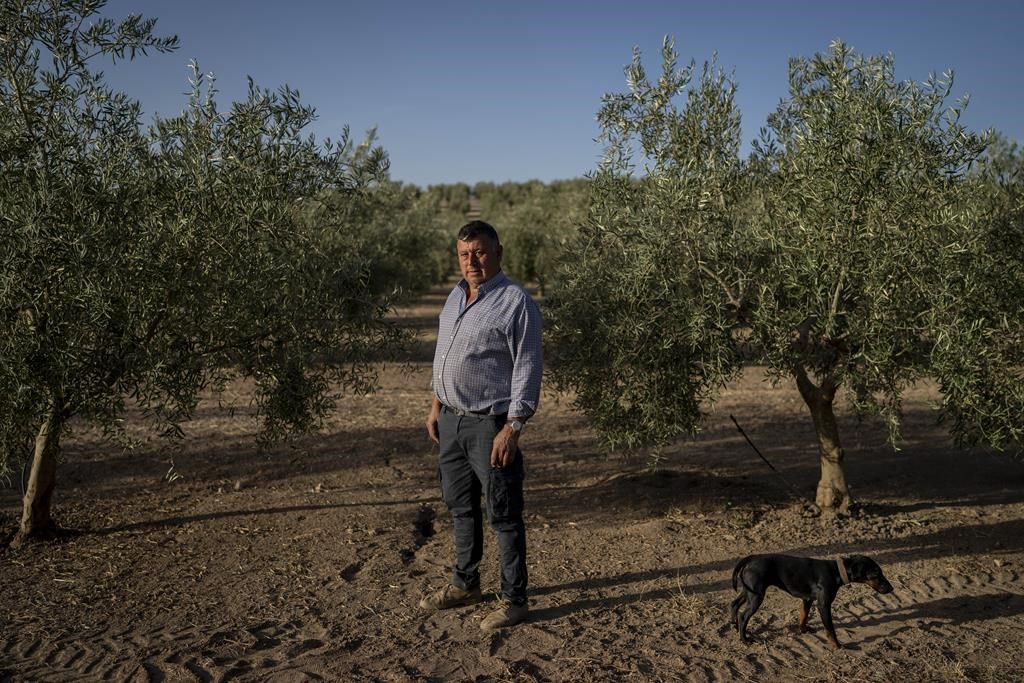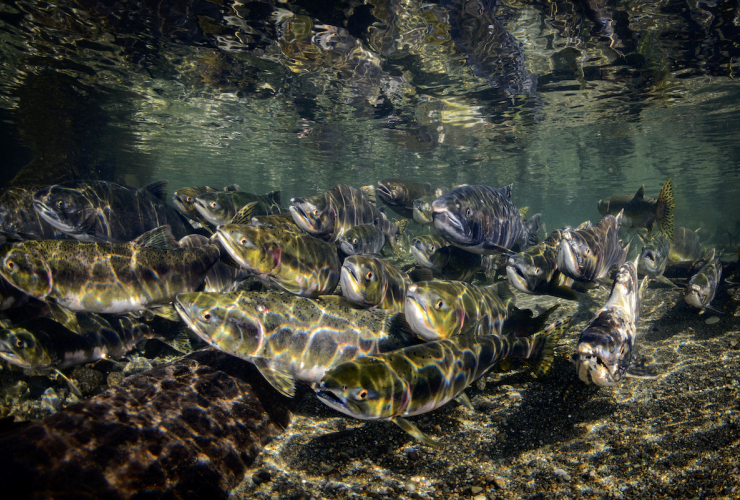An extremely hot, dry summer that shrank reservoirs and sparked forest fires is now threatening the heartiest of Spain's staple crops: the olives that make the European country the world's leading producer and exporter of the tiny green fruits that are pressed into golden oil.
Industry experts and authorities predict Spain's fall olive harvest will be nearly half the size of last year's, another casualty of global weather shifts caused by climate change.
“I am 57 years old and I have never seen a year like this one,” farmer Juan Antonio Delgado said as he walked past his rows of olive trees in the southeast town of Quesada. “My intention is to hang on as long as I can, but when the costs rise above what I make from production we will all be out of a job.”
High temperatures in May killed many of the blossoms on the olive trees in Spanish orchards. The ones that survived produced fruits that were small and thin because of not enough water. A little less moisture can actually yield better olive oil, but the recent drought is proving too much for them.
This year has been the third-driest in Spain since records were started in 1964. The Mediterranean country also had its hottest summer on record.
Spain's 350,000 olive farmers typically harvest their crops in early October, ahead of their full ripeness, in order to produce the olive oil. But with his olives still too puny to pick, Delgado left most of the fruit on his trees, hoping for rain. So far, no luck.
If the wished-for rain doesn't arrive soon, the country will produce nearly half as many olives as it did last year, according to Spain’s agriculture minister.
“Our forecast for this harvest season is notoriously low,” Agriculture Minister Luis Planas told The Associated Press. “The ministry predicts that it won't even reach 800,000 tonnes (882,000 U.S. tons)," compared with 1.47 million tonnes (1.62 million U.S. tons) in 2021.
Olive trees cover 2.7 million hectares (6.8 million acres) of Spain’s soil, with a full 37 per cent of them found in Jaén province, which is known for its “sea of olives” and where Delgado farms.
On average, Spain grows more than three times as many olives as Italy and Greece, which also are seeing smaller yields.
Olive oil production in the European Union as a whole is forecast to fall drastically compared with last year, according to the Committee of Professional Agricultural Organizations and the General Confederation of Agricultural Cooperatives,
The European farming organizations, known by the acronyms COPA and COGECA, warned in September that the yield could drop by 35 per cent due to drought and high temperatures. The two groups called the situation in Spain “particularly worrying.”
The smaller harvest is driving up prices, according to Italian olive oil producer Filippo Berio. The company said the price of European olives for extra virgin oil has soared from 500 euros per tonne ($495) to 4,985 euros ($4,938) per tonne.
Along with warmer than usual weather, the drought is affecting Spanish olives in other ways. Farming method consultant Antonio Bernal is witnessing the return of long-forgotten diseases during his visits to Quesada. He believes that milder winters are helping fungi to proliferate.
Bernal also fears that the most widespread variety of olive cultivated in Jaén won’t be able to adapt to such a quickly changing climate.
“The solution is to stop climate change: Olive groves cannot adapt at a pace to assume such a fast change," Bernal said.
Besides the olive branch being the universal symbol of peace, the olive is a symbol of the Mediterranean. Plato was said to have dispensed his wisdom under an olive tree and the olive's widespread cultivation in Spain goes back to the Romans.
When it got too dry for orange and lemon trees, olive trees were counted on to continue thriving. The short, gnarly trees cling to dry, rocky ground and seem not to mind when the sun comes pounding down. Under torrid midday conditions, microscopic pores on their leaves close to reduce water loss.
“For Jaén, the olive has been our culture, our way of subsisting and feeding our families,” said olive farmer Manuel García.
Yet even the hearty olive has limits. These days, the fruit represents the challenges communities face in a hotter, dryer world.
Researcher Virginia Hernández is an olive expert based at the Institute of Natural Resources and Agrobiology in Seville, Spain. She is studying how to adapt irrigation practices to drought, specifically the point at which “sub-optimum” quantities of water can be used to promote sustainability.
With less rain likely to become a norm, using water sparingly is critical, Hernández said. She thinks a more intelligent use of high-tech irrigation systems combined with more drought-resistant varieties of trees could save the industry as the planet warms.
According to climate experts, the Mediterranean is expected to be one of the fastest warming regions of the world in the coming years. The trick is convincing farmers that reducing their output some today might save their livelihoods tomorrow, the kind of adaptability at which olives are particularly adept, Hernández said.
“The truth is that the olive is the paradigmatic species when it comes to resisting a lack of water,” she said. “I can’t think of another that can hold up like the olive... It knows how to suffer.”
Joseph Wilson reported from Barcelona, Spain. Photojournalist Bernat Armangue and videojournalist Iain Sullivan contributed from Quesada.





Comments